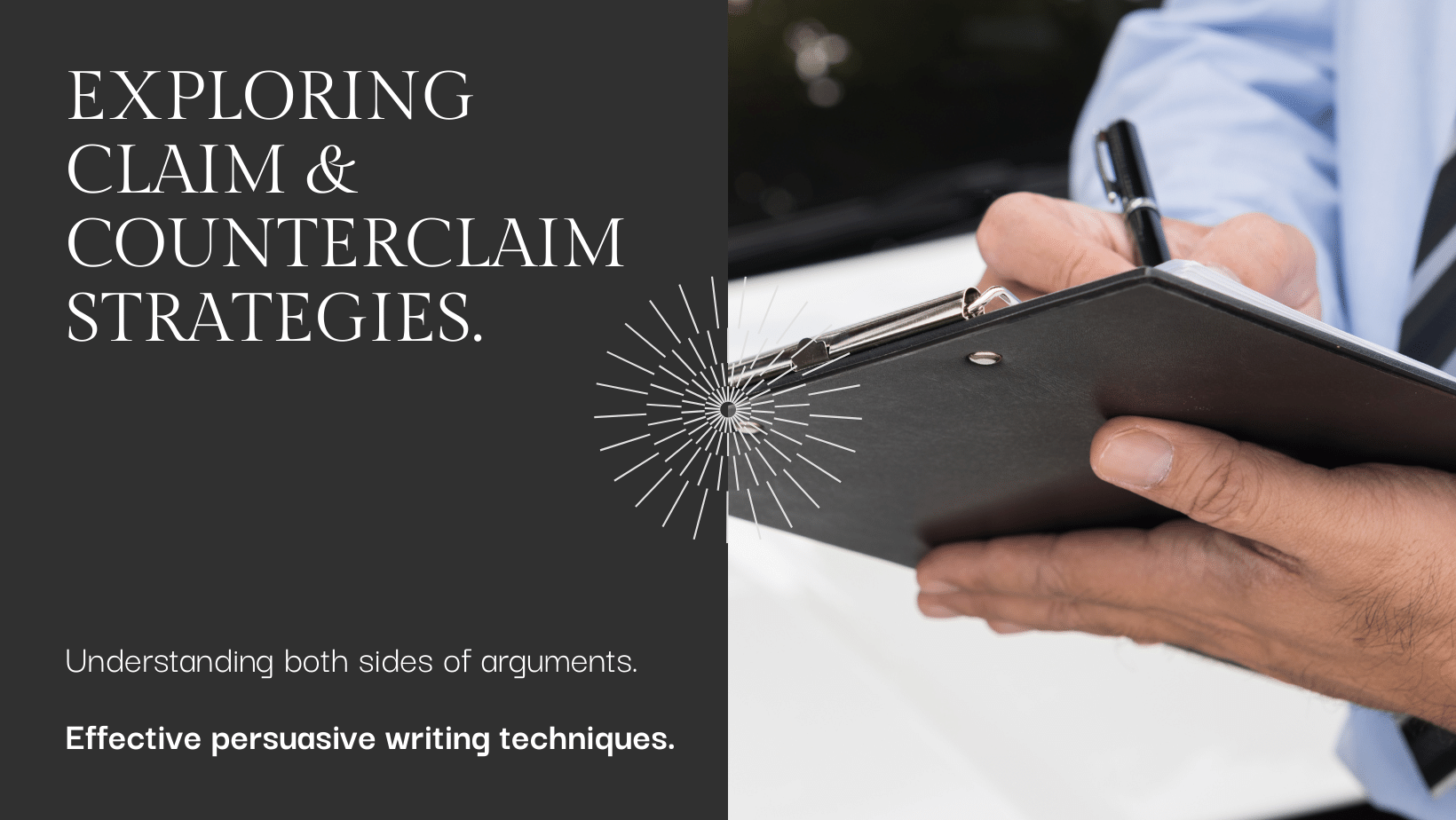Persuasive or argumentative writing is a type of written work where the intention is to convince the reader to see and accept matters from the author’s point of view on a particular issue. An excellent argumentative essay is one that identifies the critical concept, gathers evidence, and then provides logical arguments that back up the theme. The aim is to present the fundamental premise or antithesis of the entire argument that the writer wants to support. However, as it is familiar with any argumentative piece of writing, skilled writers also consider other possible opposing views that may be held by different people. Replying to the opposition is another skill in the process of persuasive, balanced argumentation.
The Claim
This is the same as the assertion or the thesis statement, as it conveys the central position that the argumentative essay seeks to advance on the subject. The claim should be straightforward and prompt an argument and proof on the claimant’s side. For instance, an assertion may state that wearing a school uniform can influence student’s behavior in a positive way and their learning. This would require substantiation based on how uniforms foster discipline amongst schools as a worked-for outcome. The evidence will be presented in the paragraphs of your body of work. Stating a claim depends on the complexity of the argument, and that is why a simple argument will require a simple claim. In contrast, an overly complicated argument will require a complex claim. That means it should present a clear and well-defined claim rather than a fact or a cliché statement.

The Counterclaim
When the writer makes a statement or an assertion, the writer is also expected to show that he or she is aware of counterarguments or opposing arguments. A counterargument can be defined as a response to the writer’s main idea or a different perspective. Since the writer has raised and then challenged counterarguments, it proves that they have engaged in a critical and comprehensive analysis of the viewpoints on the topic at hand. There are several strategies for fairly representing counterclaims:
- Restate the counterclaim in a manner that is calm and rational since the goal is to express the opinions of those on the other side of the divide fairly.
- Support the counterclaim, stating the truth behind it. Responding or countering arguments to an opposing opinion is more manageable when one grasps the reasoning behind the opposition.
- Respond to the counterclaim by arguing why the case against it is airtight. In responding to that specific counterclaim, use evidence that is appropriate for countering that particular counterclaim.
Raise Only Credible Counterclaims
A weak counterclaim should not be overemphasized, or an opponent’s argument should be misrepresented just to create a superficial argument known as a “straw man. ” Use only plausible arguments that put up a fight against the writer’s critical thesis statement. Presenting counterarguments as reasonable to some degree provides morale boosting for the actual argument when one effectively dismisses counters.
Refute with Strong Evidence
In the present case, merely claiming that the counterclaim is wrong is not enough. The writer must then argue them down from the standpoint of the narrative, using relevant and compelling evidence specific to that counterargument. Using evidence to support the primary proposition may not sufficiently counterpoint an argument. Answering arguments implies the comprehension of every argument against the main idea and meaningful thinking.
Weave Throughout the Essay
However, acknowledging the opposing views where they are less relevant or using a paragraph or section for this is ideal. The placement does make a difference—a counterclaim holds more weight if the main claim has already laid down its proofs. Focusing on counterarguments proves the writer’s ability to work with different opinions into one piece.

Consider Qualifications
Persuasive and compelling argumentation entails reasonable and sophisticated consideration of other potential viewpoints without extremely opinionated assertions by the writer. Sometimes, it could be necessary to accept some of the counterarguments as they reflect specific logical arguments, or it could be helpful to describe the limits of the writer’s statement. Subtle distinctions indicate significant analysis carried out with thorough precision.
Examples of Effective Usage
- An essay arguing for stricter gun control legislation might include a counterclaim along the lines of: Critics of such legislation argue that more legislation on the use of guns will not help avert social insecurity or decrease crime. They say that criminals do not operate within the framework of the law, so more laws will only infringe on the rights of law-abiding citizens with guns and do little to deter the unlawful use of firearms. This neutral presentation presents the counterargument’s logic.
- An essay arguing that school lunches should be healthy and nutritious might acknowledge that recent arguments against healthy lunches are best summed up in the following statement: ‘Yes, there are costs involved when it comes to improving school meals, but the eventual health gains of the kid outweigh the money spent.’
Conclusion
Using arguments against oneself is a sign of high quality in argumentative writing. To present an argument that is supported by facts and to show how the opposite opinions actually hold no merits helps to create a more persuasive case and provide a critical analysis of the subject matter. The ways of integrating counterclaims for the purpose of efficient persuasion include the following: a) counterarguments help to prevent possible objections, b) through illustrations, the writer is able to demonstrate that he/she has a broader vision of the issue and its possible solutions, c) by countering only the strong counterarguments, d) to acknowledge specific counterarguments as valid and use them to soften the impact of one’s own principal arguments. When and where counterarguments have been used, this shows that writers have engaged with different arguments about their topics of interest in as much depth as possible.

Comments are closed.